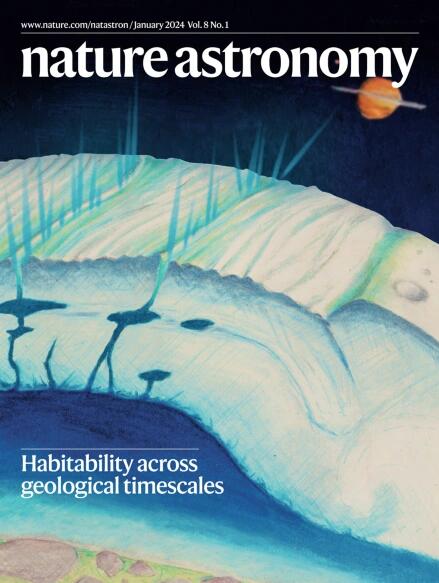一种深度学习算法,用于分解自相互作用暗物质和 AGN 反馈模型
IF 12.9
1区 物理与天体物理
Q1 ASTRONOMY & ASTROPHYSICS
引用次数: 0
摘要
暗物质的性质仍然是科学界最大的未解之谜之一。暗物质最集中的地方似乎是星系团。通过改变暗物质的性质,星系团中的质量分布发生了可观测到的改变。然而,不确定的天体物理机制也会改变质量分布,往往会模仿不同暗物质特性的影响。在这里,我介绍一种机器学习方法,它能从模拟中 "学习 "暗物质自我相互作用的影响与天体物理反馈的影响有何不同。在理想化的情况下,我的算法在识别一个星系团是否藏有无碰撞暗物质、自相互作用截面为σDM/m = 0.1 cm2 g-1的暗物质或σDM/m = 1 cm2 g-1的暗物质方面的准确率为80%。研究发现,弱透镜信息主要区分自相互作用暗物质,而 X 射线信息则区分不同的天体物理反馈模型。对数据进行前向建模以模仿欧几里得和钱德拉的观测结果,结果发现该模型的统计误差为σDM/m < 0.01 cm2 g-1,并且对形状测量偏差和光度红移误差不敏感。这种方法代表了一种分析即将到来的望远镜数据的方法,它比目前的方法精确一个数量级,速度也快很多个数量级,使我们能够前所未有地探索暗物质的特性。本文章由计算机程序翻译,如有差异,请以英文原文为准。


A deep-learning algorithm to disentangle self-interacting dark matter and AGN feedback models
The nature of dark matter remains one of the greatest unanswered questions in science. The largest concentrations of dark matter appear to lie in galaxy clusters. By modifying the properties of dark matter, the distribution of mass in clusters is altered in an observable way. However, uncertain astrophysical mechanisms also alter the mass distribution, often mimicking the effect of different dark matter properties. Here I present a machine learning method that ‘learns’, from simulations, how the impact of dark matter self-interactions differs from that of astrophysical feedback. In the idealized case, my algorithm is 80% accurate at identifying whether a galaxy cluster harbours collisionless dark matter, dark matter with a self interaction cross-section, σDM/m = 0.1 cm2 g−1 or dark matter with σDM/m = 1 cm2 g−1. It is found that weak-lensing information primarily differentiates self-interacting dark matter, whereas X-ray information disentangles different models of astrophysical feedback. The data are forward modelled to imitate observations from Euclid and Chandra, and it is found that the model has a statistical error of σDM/m < 0.01 cm2 g−1 and is insensitive to shape-measurement bias and photometric-redshift errors. This method represents a way to analyse data from upcoming telescopes that are an order of magnitude more precise and many orders faster than current methods, enabling us to explore the properties of dark matter like never before. Machine learning provides an opportunity to probe dark matter in massive galaxy clusters, more precisely and hundreds of times faster than current methods.
求助全文
通过发布文献求助,成功后即可免费获取论文全文。
去求助
来源期刊

Nature Astronomy
Physics and Astronomy-Astronomy and Astrophysics
CiteScore
19.50
自引率
2.80%
发文量
252
期刊介绍:
Nature Astronomy, the oldest science, has played a significant role in the history of Nature. Throughout the years, pioneering discoveries such as the first quasar, exoplanet, and understanding of spiral nebulae have been reported in the journal. With the introduction of Nature Astronomy, the field now receives expanded coverage, welcoming research in astronomy, astrophysics, and planetary science. The primary objective is to encourage closer collaboration among researchers in these related areas.
Similar to other journals under the Nature brand, Nature Astronomy boasts a devoted team of professional editors, ensuring fairness and rigorous peer-review processes. The journal maintains high standards in copy-editing and production, ensuring timely publication and editorial independence.
In addition to original research, Nature Astronomy publishes a wide range of content, including Comments, Reviews, News and Views, Features, and Correspondence. This diverse collection covers various disciplines within astronomy and includes contributions from a diverse range of voices.
 求助内容:
求助内容: 应助结果提醒方式:
应助结果提醒方式:


